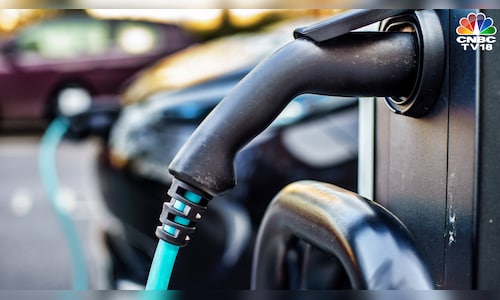Our Terms & Conditions | Our Privacy Policy
Battery swapping can accelerate India’s EV adoption, says industry experts
Battery swapping could be a game-changer for India’s electric vehicle (EV) adoption, helping reduce costs and keep vehicles on the road longer, industry experts told CNBC-TV18. Siddharth Sikka, Co-founder of Battery Smart, said, “When you remove battery ownership from the purchase equation, you bring down the upfront cost of an electric vehicle by as much as 40%. For commercial drivers or fleet operators, swapping means you are never stuck waiting for charging.”
Battery Smart currently operates over 1,600 swapping stations, completing about 4 million swaps each month. Sikka highlighted the need for supportive policy measures, including GST rationalisation: “Electric vehicles are taxed at 5%, but if you separate the battery, it becomes 18%. If you bring the GST on swapping down to 5%, the same as EVs, it will immediately cut costs for drivers and push adoption much faster.”
India’s EV penetration currently stands at around 7%, with strong growth in two- and three-wheelers but slower adoption in passenger cars. Virendra Goyal, Head of BD-EV Charging at Tata Power, noted that 2024 passenger car sales of 95,000–98,000 units are nearly matched by sales between January and July this year, reflecting growing consumer confidence.
“Consumers have many more options today, and the price difference between an ICE vehicle and an EV is continuously reducing,” he said.
Charging infrastructure remains a critical challenge. Tata Power has installed about 1,50,000 home chargers and plans to add 7.5 lakh more over the next five years. Public and semi-public charging points are expected to rise to around 10,000. Goyal added, “Approximately 90% of charging happens at home, and many users never go to a public charging station. Given the ease and the kind of service we have created, it is seamless.”
Fast charging technology is gaining traction, but deployment depends on grid capacity and OEM support. Akshit Bansal, Founder and CEO of Statiq, which has installed over 8,000 chargers in 70 cities, said, “Even though fast charging is the way forward, there are a lot more challenges that need to be solved, majorly in the back-end power infrastructure, which is not adequate at many locations.”
State-level policy and infrastructure also play a vital role. Jayesh Ranjan, Special Chief Secretary of Telangana, said the state has set up India’s first energy storage park, with plans for another, providing robust land, power, water, and transport facilities for battery manufacturing. “Along with infrastructure, the supply chain is also critical,” he noted.
Despite multiple government schemes, including FAME I & II, PM e-Drive, and PLI incentives for cell manufacturing, domestic battery production has been slow due to immature supply chains and import dependency. Ranjan said, “Cell manufacturing is very much required and will help the country become self-sufficient, but we need expertise in producing refined components and managing complex manufacturing processes.”
Policy standardisation across states is challenging in India’s federal system. Ranjan suggested identifying six to seven states with the best value propositions in terms of policy, infrastructure, skills, and supply chains, and directing investment there. “This would allow healthy competition between these states, with additional central support as the icing on the cake,” he added.
As India races towards its 30% EV penetration goal by 2030, experts say that battery swapping, alongside strategic fast-charging rollout, supportive state policies, and coordinated supply chain development, will be crucial to achieving a truly electric future.
Watch the accompanying video for the entire discussion.
Images are for reference only.Images and contents gathered automatic from google or 3rd party sources.All rights on the images and contents are with their legal original owners.



Comments are closed.